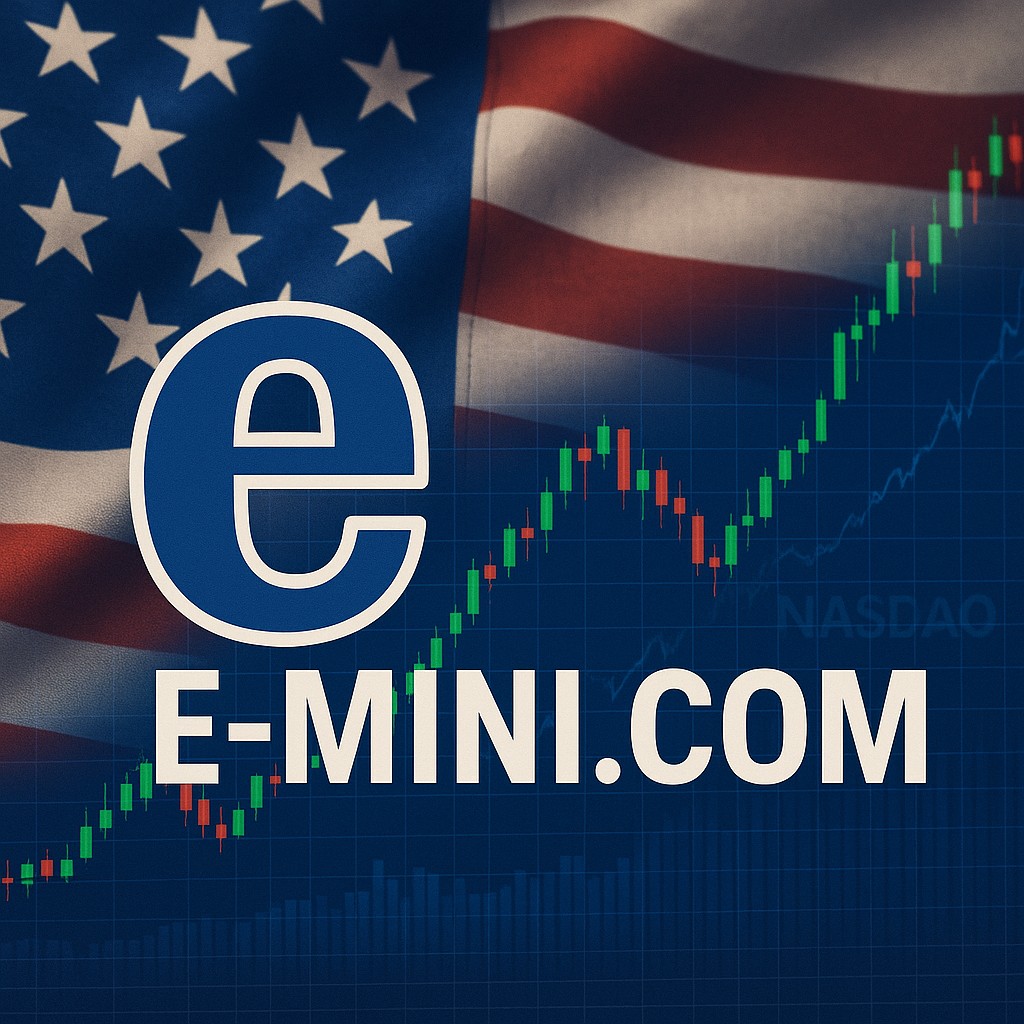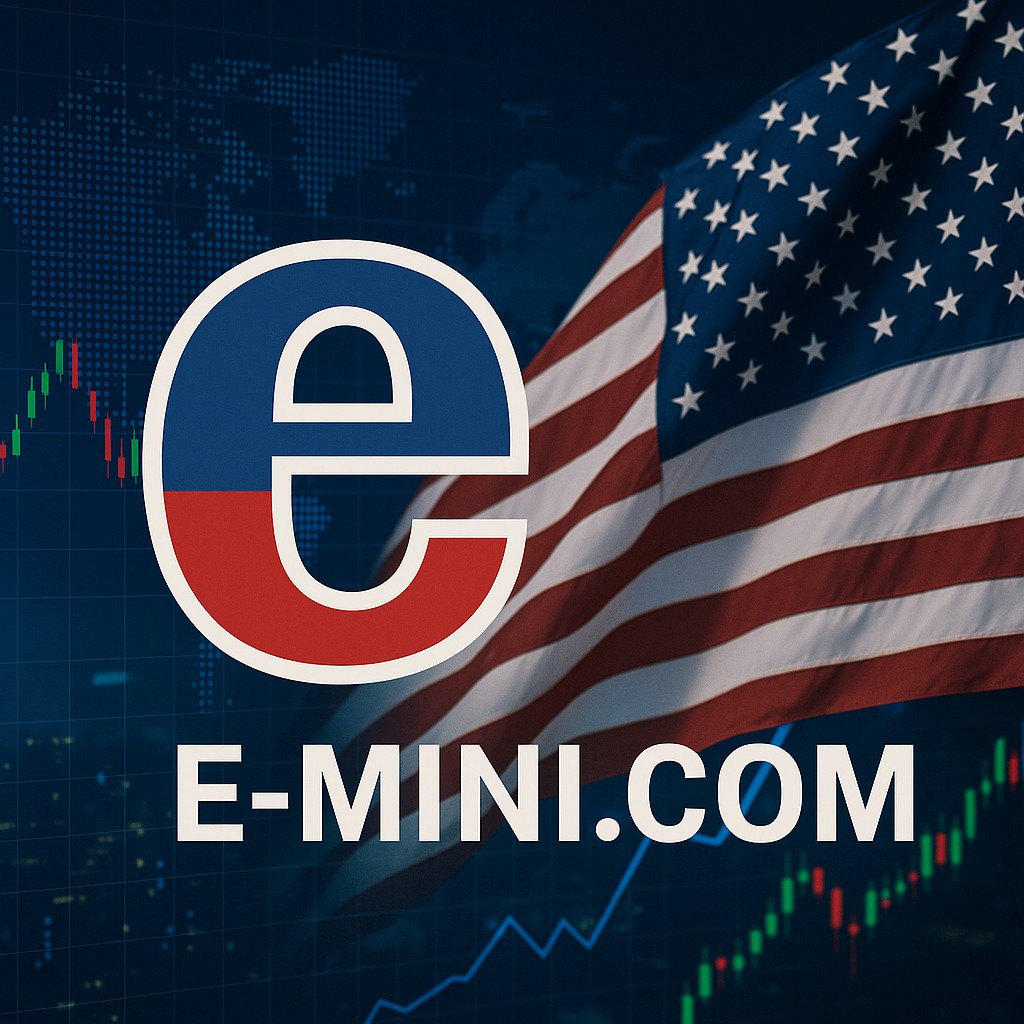E-mini futures contracts, often referred to as e-minis, have revolutionized the futures trading landscape since their inception. These contracts are electronically traded futures contracts that cover a fraction of the value of corresponding standard futures contracts. They are primarily traded on the Chicago Mercantile Exchange (CME) and have gained significant popularity among traders for their accessibility, liquidity, and flexibility. This comprehensive guide delves into the intricacies of e-mini futures contracts, their specifications, historical background, trading dynamics, and the reasons they have become a cornerstone in futures trading.
What are E-mini Futures Contracts?
E-mini futures contracts are smaller versions of standard futures contracts, designed to offer more accessible and flexible trading options for market participants. The “E” stands for electronic, indicating that these contracts are primarily traded on electronic platforms, which enhances their accessibility and trading efficiency. The “mini” denotes that these contracts represent a fraction of the size of their standard counterparts, making them more affordable and manageable for a wider range of traders.
Key Characteristics of E-mini Futures Contracts
- Electronic Trading: E-minis are traded electronically on the CME Globex platform, providing traders with a highly efficient and transparent trading environment.
- Smaller Contract Sizes: E-mini contracts are typically one-fifth the size of standard futures contracts, making them more accessible to individual traders and smaller institutions.
- High Liquidity: The popularity of e-minis ensures deep liquidity, allowing for smooth execution of trades and tighter bid-ask spreads.
- Extended Trading Hours: E-minis can be traded almost 24 hours a day, five days a week, providing flexibility for traders across different time zones.
Specifications of E-mini Futures Contracts
The specifications of e-mini futures contracts vary depending on the underlying asset. Here, we’ll focus on some of the most popular e-mini contracts, including the E-mini S&P 500, E-mini NASDAQ-100, and E-mini Dow Jones Industrial Average.
E-mini S&P 500 (ES)
- Ticker Symbol: ES
- Underlying Asset: S&P 500 Index
- Contract Size: $50 times the S&P 500 Index
- Tick Size: 0.25 index points, equivalent to $12.50 per contract
- Trading Hours: Sunday to Friday, nearly 24 hours per day with a daily maintenance period.
- Settlement: Cash settled based on the closing value of the S&P 500 Index on the third Friday of the contract month.
E-mini NASDAQ-100 (NQ)
- Ticker Symbol: NQ
- Underlying Asset: NASDAQ-100 Index
- Contract Size: $20 times the NASDAQ-100 Index
- Tick Size: 0.25 index points, equivalent to $5.00 per contract
- Trading Hours: Similar to ES, with nearly 24-hour trading sessions.
- Settlement: Cash settled based on the closing value of the NASDAQ-100 Index on the third Friday of the contract month.
E-mini Dow Jones Industrial Average (YM)
- Ticker Symbol: YM
- Underlying Asset: Dow Jones Industrial Average (DJIA)
- Contract Size: $5 times the DJIA
- Tick Size: 1 index point, equivalent to $5.00 per contract
- Trading Hours: Similar to ES and NQ.
- Settlement: Cash settled based on the closing value of the DJIA on the third Friday of the contract month.
Who Trades E-mini Futures?
E-mini futures attract a diverse range of market participants, including:
- Individual Traders: Retail investors often trade e-minis due to their smaller contract sizes and lower margin requirements, making them more accessible.
- Institutional Investors: Hedge funds, pension funds, and other institutional investors use e-minis for hedging and speculative purposes.
- Day Traders: The high liquidity and volatility of e-minis make them attractive to day traders who seek short-term profits.
- Algorithmic Traders: The electronic nature of e-mini trading suits algorithmic and high-frequency trading strategies.
- Hedgers: Companies and portfolio managers use e-minis to hedge against adverse movements in the underlying indices.
Contract Sizes of E-mini Futures
As mentioned earlier, the contract size of e-mini futures is a fraction of the corresponding standard futures contract. This smaller size makes e-minis more accessible to individual traders and smaller institutions. Here are some examples of e-mini contract sizes:
- E-mini S&P 500: $50 times the S&P 500 Index
- E-mini NASDAQ-100: $20 times the NASDAQ-100 Index
- E-mini Dow Jones Industrial Average: $5 times the DJIA
These smaller contract sizes reduce the financial commitment required to trade futures and allow for more precise risk management.
Why Were E-mini Futures Created?
The creation of e-mini futures contracts was driven by several factors aimed at enhancing market participation and improving trading efficiency:
- Accessibility: Standard futures contracts can be prohibitively large and expensive for individual traders. E-minis were introduced to provide a more accessible entry point into futures trading.
- Electronic Trading: The shift from open outcry trading to electronic trading platforms offered greater transparency, faster execution, and reduced trading costs.
- Increased Liquidity: The introduction of e-minis brought more participants into the market, enhancing liquidity and making it easier to enter and exit positions.
- Risk Management: E-minis allow for more precise hedging and risk management, particularly for smaller portfolios or individual investments.
- Flexibility: The smaller contract sizes of e-minis provide greater flexibility in managing exposure to market movements.
How Do E-mini Futures Help Futures Traders?
E-mini futures contracts offer several advantages to futures traders, contributing to their widespread popularity:
- Lower Financial Commitment: The smaller contract sizes of e-minis reduce the capital required to trade futures, making them accessible to a broader range of traders.
- High Liquidity: E-minis are among the most liquid futures contracts, ensuring tight bid-ask spreads and ease of trade execution.
- Risk Management: Traders can use e-minis to hedge their portfolios or manage risk with greater precision due to the smaller contract sizes.
- Flexibility: E-minis can be traded almost 24 hours a day, allowing traders to react to global market events and manage positions outside regular trading hours.
- Transparency: The electronic trading platform provides real-time data and transparent pricing, enhancing the trading experience.
- Leverage: Futures contracts, including e-minis, offer leverage, allowing traders to control larger positions with a smaller amount of capital. This can amplify gains, but also increases the risk of losses.
History of E-mini Futures Contracts
The history of e-mini futures contracts dates back to the late 1990s, a period marked by rapid technological advancements and growing interest in electronic trading. Here is a brief overview of the key milestones in the history of e-mini futures:
- Introduction of E-mini S&P 500: The first e-mini futures contract, the E-mini S&P 500 (ES), was launched by the CME on September 9, 1997. It was designed to be one-fifth the size of the standard S&P 500 futures contract, making it more accessible to individual traders.
- Expansion to Other Indices: Following the success of the E-mini S&P 500, the CME introduced e-mini contracts for other major indices, including the NASDAQ-100 (NQ) and the Dow Jones Industrial Average (YM), further expanding the range of available e-mini products.
- Growth in Popularity: The popularity of e-mini futures grew rapidly, driven by the advantages of electronic trading, high liquidity, and lower financial barriers to entry. E-minis became a staple in the portfolios of individual and institutional traders alike.
- Introduction of Additional Products: Over the years, the CME expanded the e-mini product line to include futures on other indices, commodities, and even interest rates. This diversification provided traders with more opportunities to hedge and speculate across different markets.
- Technological Advancements: Continuous improvements in trading technology and the expansion of electronic trading platforms further enhanced the accessibility and efficiency of e-mini futures trading.
Margin Requirements for E-mini Futures
Margin requirements for e-mini futures contracts are lower compared to their standard counterparts, reflecting their smaller contract sizes. Margin is the amount of money that a trader must deposit with their broker to open and maintain a futures position. There are two types of margin requirements:
- Initial Margin: The initial deposit required to open a futures position. It is typically a small percentage of the total contract value.
- Maintenance Margin: The minimum account balance that must be maintained to keep the futures position open. If the account balance falls below this level, the trader may receive a margin call and be required to deposit additional funds.
Margin Requirements
Margin requirements allow traders to leverage their capital, controlling larger positions with a relatively small investment. However, it’s important to note that leverage can magnify both gains and losses, making risk management crucial in e-mini futures trading.
Why Do Futures Traders Trade E-minis?
E-mini futures have become a preferred choice for many futures traders due to several compelling reasons:
- Accessibility: The smaller contract sizes and lower margin requirements make e-minis accessible to a broader range of traders, including retail investors and smaller institutions.
- Liquidity: E-minis are among the most liquid futures contracts, ensuring tight bid-ask spreads and the ability to enter and exit positions quickly and efficiently.
- Extended Trading Hours: E-minis can be traded nearly 24 hours a day, providing flexibility for traders to manage their positions around the clock and react to global market events.
- Risk Management: E-minis offer a versatile tool for hedging and risk management, allowing traders to hedge specific exposures or diversify their portfolios with precision.
- Cost Efficiency: The electronic trading platform reduces transaction costs, and the high liquidity of e-minis minimizes slippage, making them cost-effective to trade.
- Transparency: The electronic trading environment provides real-time data and transparent pricing, enhancing the trading experience and enabling informed decision-making.
- Leverage: E-mini futures offer significant leverage, allowing traders to control larger positions with a smaller amount of capital. This can amplify potential profits but also increases the risk of losses.
- Volatility: The inherent volatility of the underlying indices makes e-minis attractive to traders seeking short-term trading opportunities and potential profit from price fluctuations.
E-mini futures contracts have transformed the futures trading landscape by providing a more accessible, flexible, and efficient trading vehicle for a wide range of market participants. Their smaller contract sizes, high liquidity, extended trading hours, and lower margin requirements make them particularly appealing to individual traders and smaller institutions. The history of e-mini futures is a testament to the continuous evolution of financial markets and the importance of innovation in making trading more inclusive and efficient. Whether for hedging, speculation, or risk management, e-minis offer a versatile and powerful tool for navigating the complexities of the financial markets. As technology and market dynamics continue to evolve, e-mini futures are likely to remain a cornerstone of futures trading for years to come.
To open a futures account with E-Mini.com, please click here.
Ready to start trading futures? Call US 1(800)454-9572 – Int’l (310)859-9572 email info@cannontrading.com and speak to one of our experienced, Series-3 licensed futures brokers and start your futures trading journey with E-Mini.com today.
Disclaimer – Trading Futures, Options on Futures, and retail off-exchange foreign currency transactions involves substantial risk of loss and is not suitable for all investors. Past performance is not indicative of future results. You should carefully consider whether trading is suitable for you in light of your circumstances, knowledge, and financial resources. You may lose all or more of your initial investment. Opinions, market data, and recommendations are subject to change at any time.
Important: Trading commodity futures and options involves a substantial risk of loss. The recommendations contained in this writing are of opinion only and do not guarantee any profits. This writing is for educational purposes. Past performances are not necessarily indicative of future results.
**This article has been generated with the help of AI Technology. It has been modified from the original draft for accuracy and compliance.
***@cannontrading on all socials.
![]()
![]()
![]()





